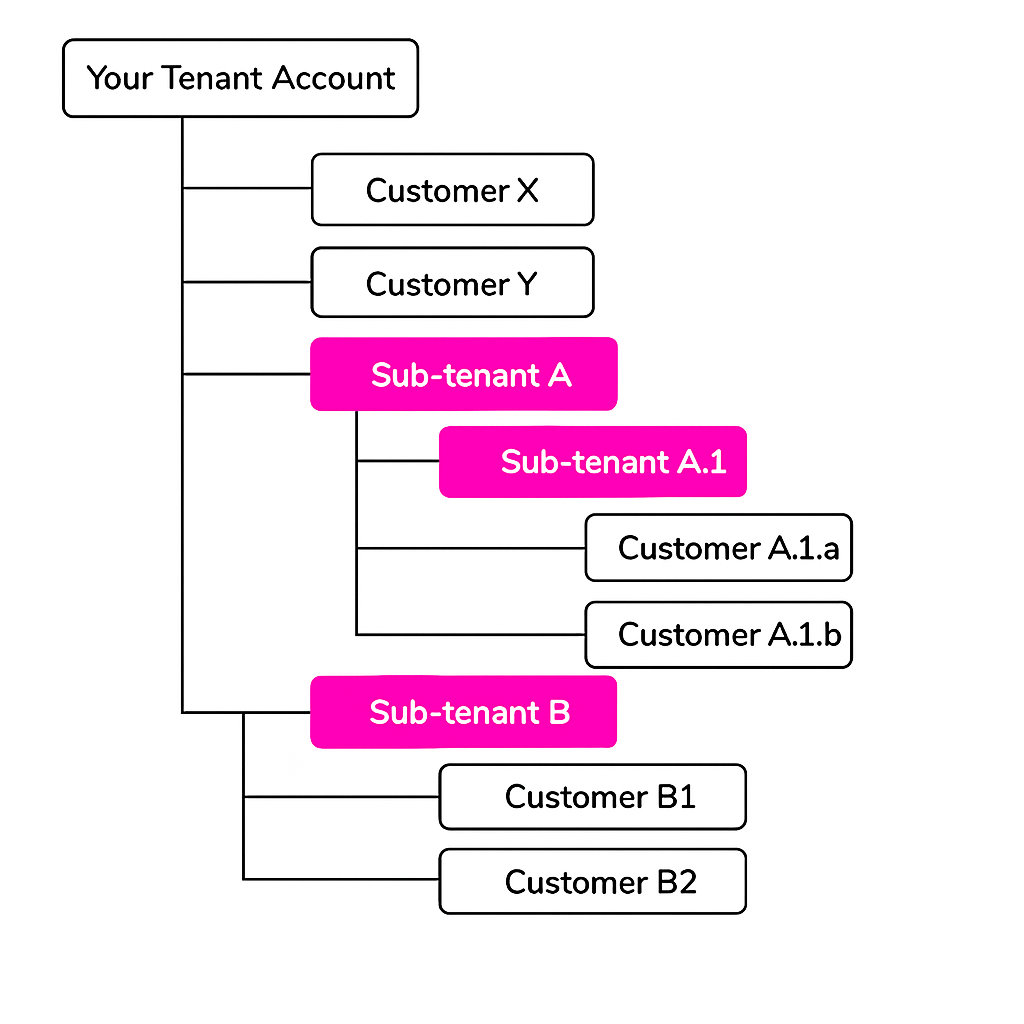Key Concepts You'll Work With
Understanding these core concepts will help you navigate the platform effectively. Each plays a specific role in how connectivity services are organized and delivered.
Think of a tenant as your organization or business unit. Tenants can contain other tenants (we call them sub-tenants) and customers. This creates a tree-like structure where you can see and manage everything below your level. If you're logged in at a high level, you can impersonate lower levels to provide support or manage their setup.
Understanding Your Account Structure
Let's start with the basics - when you log into the Stacuity tenant portal, you're accessing your tenant account. This is the account that Stacuity has set up and manages for you. It's your home base in the system.
Under your main tenant account, you can create what we call sub-tenants. These are like subsidiary accounts that you control and manage yourself. Sub-tenants let you organize your business exactly how you need it.
Here's how the hierarchy works in practice:
Your Tenant Account (managed by Stacuity)
- This is your main account
- Stacuity sets this up for you and handles the backend management
- You have full control over everything that sits below this level
- You cannot
- Edit the definition of this account or
- Manage topup, debit or credit the account.
Sub-tenants (created and managed by you)
- These are accounts you create under your main tenant
- Perfect for organizing different business units, regions, or customer types
- Each sub-tenant can have its own customers, bundles, and tariffs
- Each sub-tenant can add their own sub-tenants under them
- You can create as many as you need
You're at the top level, and everything branches out below you in a way that makes sense for how you operate.
Customers vs Sub-Tenants
The key difference: tenants supply and manage connectivity, while customers consume it. Customers are where the actual endpoints live and get configured for network access. A customer might be a corporation buying IoT connectivity, or an individual subscriber - they're the end user of your services.
Endpoints - More Than Just SIMs
We call them endpoints because they're really the combination of a SIM card and the device it goes into. You can't separate them in practice - the SIM needs the device to connect, and we manage them as a single unit. Endpoints must be assigned to a customer and placed in an endpoint group before they can become active on the network.
Bundles vs Tariffs
Bundles are data packages - "1GB valid in the UK for 30 days" - while tariffs are pay-as-you-go rates like "10p per MB used." Most customers use one or the other, and bundles take priority when both are present. Bundles are perfect for predictable usage, while tariffs work well for variable or occasional use.
Accounts - User and Monetary
Every tenant and customer has their own **monetary account **with a balance. This is separate from **user accounts **(which are for logging in). When we talk about "accounts" in billing contexts, we mean these monetary accounts that track charges and payments.
Users and Access Control
A user is a login account that provides human access to the system. You can assign users to either the tenant or customer level, and this determines their access scope. Users assigned to a tenant can see that tenant and everything below it in the hierarchy.
System Architecture and Hierarchy
The Stacuity platform uses a hierarchical structure that determines access and management capabilities. Here's how it works:
Your Tenant account

Downward Visibility Principle: Users can see and manage everything below their level in the hierarchy. Root users see all tenants, sub-tenants, and customers. Tenant users see their tenant and everything below. Customer users see only their customers and endpoints.
Inheritance and Distribution: Some system settings and configurations inherit downward through the hierarchy. Tariff aliases and certain configuration options flow from parent to child levels automatically.
Updated 1 day ago
Finding your way around
